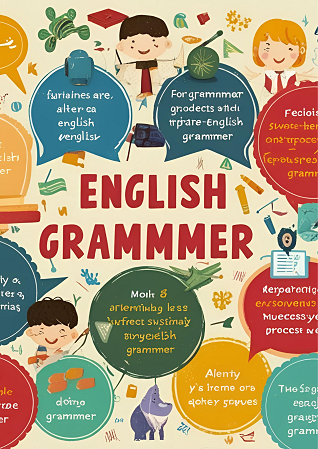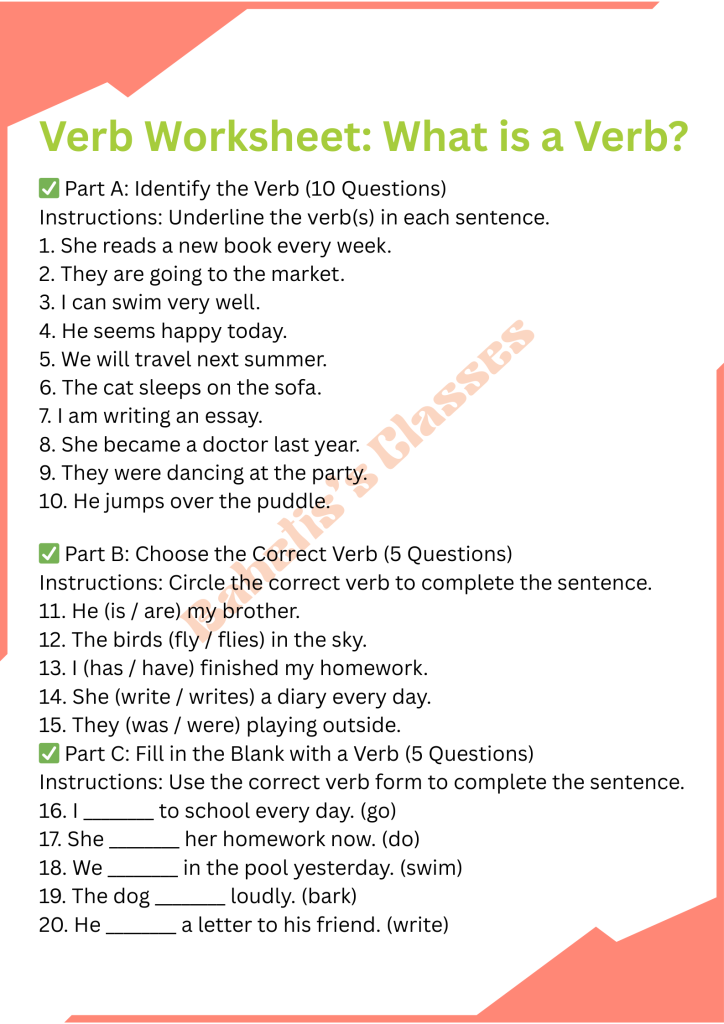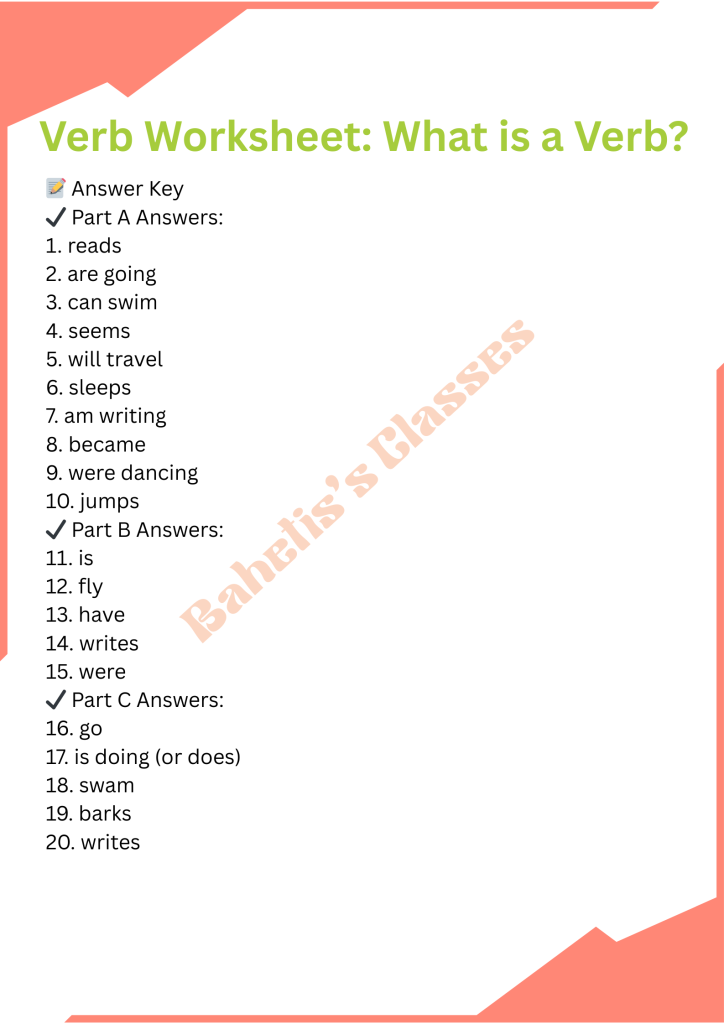If you’re trying to understand what is a verb, you’re not alone! This basic part of speech plays a major role in constructing proper English sentences. Verbs are words that express actions, states, or occurrences. Without them, we wouldn’t be able to describe what anyone is doing, feeling, or experiencing.
Let’s explore this important concept in detail with easy definitions and helpful examples.

Table of Contents
🔤 What is a Verb?
A verb is a word that shows what someone or something does. It can describe an action (like “run” or “write”), a state of being (like “is” or “seem”), or an occurrence (like “happen”). In short, if you want to express any kind of doing, being, or feeling in English, you’ll need a verb.
For example:
- She reads books.
- They are happy.
- It rained yesterday.
- She runs every morning to stay fit.
- They built a treehouse in their backyard.
- He is very good at solving puzzles.
- I write in my journal every night.
- We watched a movie last night.
- The dog barked loudly at the stranger.
- They are eating lunch together at the cafeteria.
- The teacher explained the topic clearly.
- She has finished her homework already.
- Birds fly across the sky in a V-shape.
All the bold words above are verbs. They either show action or state of being.
✅ Types of Verbs
Now that you know what is a verb, let’s look at the different types.
1. Action Verbs
These verbs show physical or mental actions.
Examples:
- Run
- Write
- Think
- Jump
- Laugh
Example sentence:
He jumps over the wall.
2. Linking Verbs
These verbs link the subject to more information about it. They don’t show action but a state of being.
Examples:
- Is
- Are
- Was
- Seem
- Become
Example sentence:
She is tired.
3. Helping Verbs (Auxiliary Verbs)
These are used with the main verb to show tense, mood, or voice.
Examples:
- Have
- Has
- Will
- Can
- Should
Example sentence:
They have eaten already.
🧠 Why Are Verbs Important?
Verbs are essential to sentence structure. Without them, you cannot form a proper sentence. Every complete sentence must contain at least one verb. Knowing what is a verb helps you understand grammar more deeply and improves your communication skills.
📝 Examples in Sentences
Let’s look at more examples:
- I write in my journal daily.
- They were very excited about the trip.
- We have finished our homework.
- The sun shines brightly.
- She seems upset.
Each sentence includes at least one verb that shows what the subject is doing or feeling.
🎓 Verb Tenses
Verbs also change based on time. That’s where verb tenses come in—past, present, and future.
- Present: I eat breakfast.
- Past: I ate breakfast.
- Future: I will eat breakfast.
Understanding what is a verb includes learning how verbs change based on when the action happens.
🧩 Fun Fact
In English, the most commonly used verb is “be” in its various forms (is, are, am, was, were). It appears in almost every type of writing!
📝 Verb Worksheet


🏁 Conclusion
So, what is a verb? A verb is the engine of a sentence—it drives meaning and action. Whether it’s describing what you did today, how you feel, or what will happen tomorrow, verbs are there to help you express it.
Keep practicing different types of verbs, and soon you’ll be using them naturally and confidently in your writing and speaking.
Hay please checkout our blog on What is Noun ?
